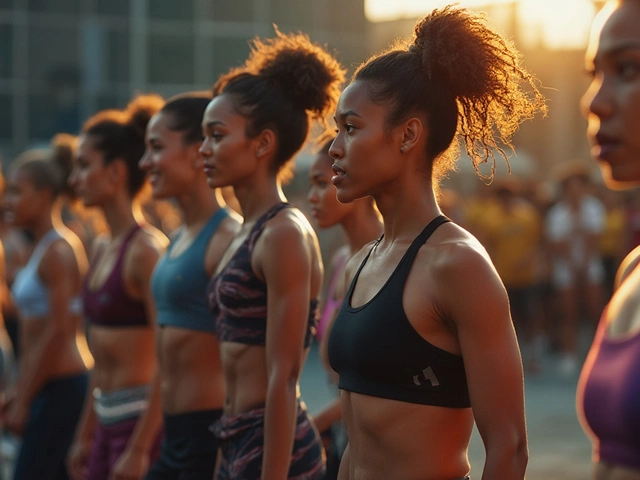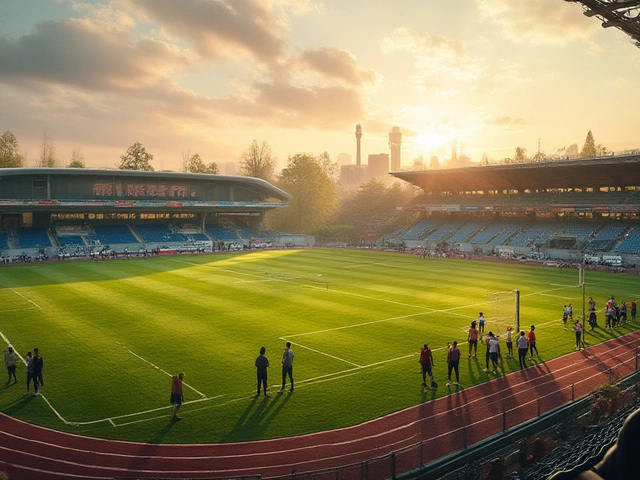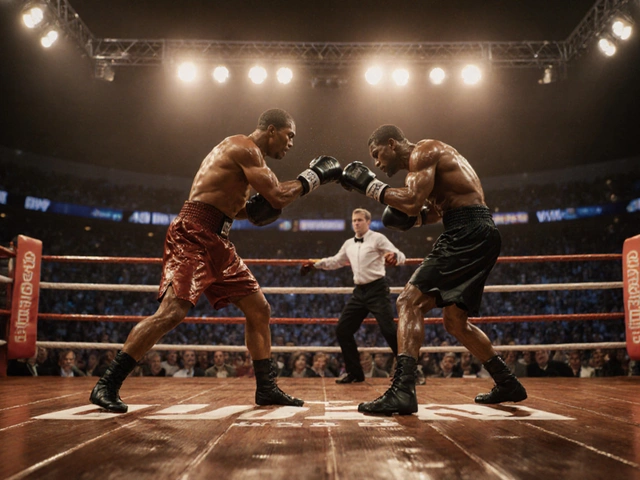Is a Shoe Really Sports Equipment?
Walk into any gym, field, or court, and there's one thing everyone has in common—shoes. But hang on, does that mean every shoe is sports equipment? Not quite. The simple truth: while you can kick a ball or run in just about anything, the shoes you choose play a massive role in your comfort, performance, and even whether you stay injury-free.
Think about basketball. High-top shoes are built with extra ankle support and serious grip. Compare those to your everyday Vans—there's a world of difference if you jump or change direction fast. Or take running: a shoe built for sprinting looks nothing like a hiking boot. Your foot lands different, your risk of injury changes, all because of what’s on your feet.
- Where Do Shoes Fit in Sports Gear?
- What Makes a Regular Shoe Different from Sports Equipment?
- When Does a Shoe Become Essential for Your Sport?
- Cool Facts: Shoe Tech and Pro Performance
- Quick Tips: Picking the Right Shoe for Your Game
Where Do Shoes Fit in Sports Gear?
It’s easy to lump shoes in with your everyday wardrobe, but step into any real game and you’ll realize shoes are more like tools than just clothes. Look at a pro soccer match—those players wear cleats because grip on wet grass can make or break every play. Then there’s tennis, where shoes are designed to let you stop and jump sideways without sliding all over the court. It’s not just about comfort; it’s about function and staying safe.
Think about the bigger picture: almost every major sport has its own type of shoes. Here’s why they’re actually considered sports equipment by athletes and coaches everywhere:
- Protects Your Body: Sports shoes help absorb shock, prevent twisted ankles, and keep your joints healthier. Basketball or volleyball shoes, for example, have extra cushion because of all that jumping and landing.
- Boosts Your Performance: Good sports footwear can increase speed, grip, and stability. Marathon shoes are lighter and designed to shave seconds off your time. Soccer cleats dig into grass for game-changing moves.
- Sport Rules and Requirements: Most official games require you to wear sport-specific shoes. You won’t get on a pro field in running sneakers or backstage at a weightlifting event in flip flops.
If you’re curious how important shoes really are, just check out the rules of the NBA, FIFA, or Olympic events. For instance, the NBA has rules about non-slip soles, while FIFA bans metal studs in some youth leagues. As odd as it sounds, in these circles, shoes are just as critical as the ball or the net.
Here’s a quick comparison table to show how different sports demand different shoe tech:
| Sport | Shoe Feature | Why It Matters |
|---|---|---|
| Basketball | Ankle support, grip | Frequent quick changes of direction |
| Soccer | Cleats, lightweight | Traction on grass, speed |
| Running | Cushioning, flexibility | Protects feet over long distances |
| Tennis | Side-to-side support, durable sole | Rapid lateral movement, hard surfaces |
What Makes a Regular Shoe Different from Sports Equipment?
Grab a basic sneaker from your closet and a high-performance running shoe side by side—they might both cover your feet, but their jobs are totally different. The big deal? Sports equipment is made on purpose for a certain activity and often built with way more science behind it.
A regular shoe is mostly about looks and comfort. Think sandals, boots, or your go-to slip-ons. They’re fine for daily errands but won’t do you any favors on a basketball court or soccer field. Sports shoes, though, are a kind of specialized gear—just like a tennis racket or a baseball glove—because they’re designed for movement, protection, and sometimes even to boost how well you play.
- Shoe tech is serious business. Running shoes often use foam for impact control, mesh for breathability, and “rock plates” in trail shoes for stability on uneven ground.
- Soccer cleats have studs for grip on grass, and basketball shoes have soles that help you stop and go, fast.
- The shapes are different too—wide toe boxes for hiking, narrow fits for sprinting, higher ankles for sports with more jumping.
Here’s a quick snapshot to compare the differences:
| Feature | Regular Shoe | Sports Equipment Shoe |
|---|---|---|
| Main Purpose | Everyday use | Specific sport/activity |
| Support | Basic | Sport-tailored (e.g. ankle, arch) |
| Material | Standard fabrics | Performance tech (foam, mesh, carbon) |
| Traction | Minimal | Special sole for grip |
Bottom line: The line between a simple shoe and real sports equipment comes down to function and features—not just fashion. Thinking about what you expect from your gear makes it easier to see why the right shoe matters so much when you move.
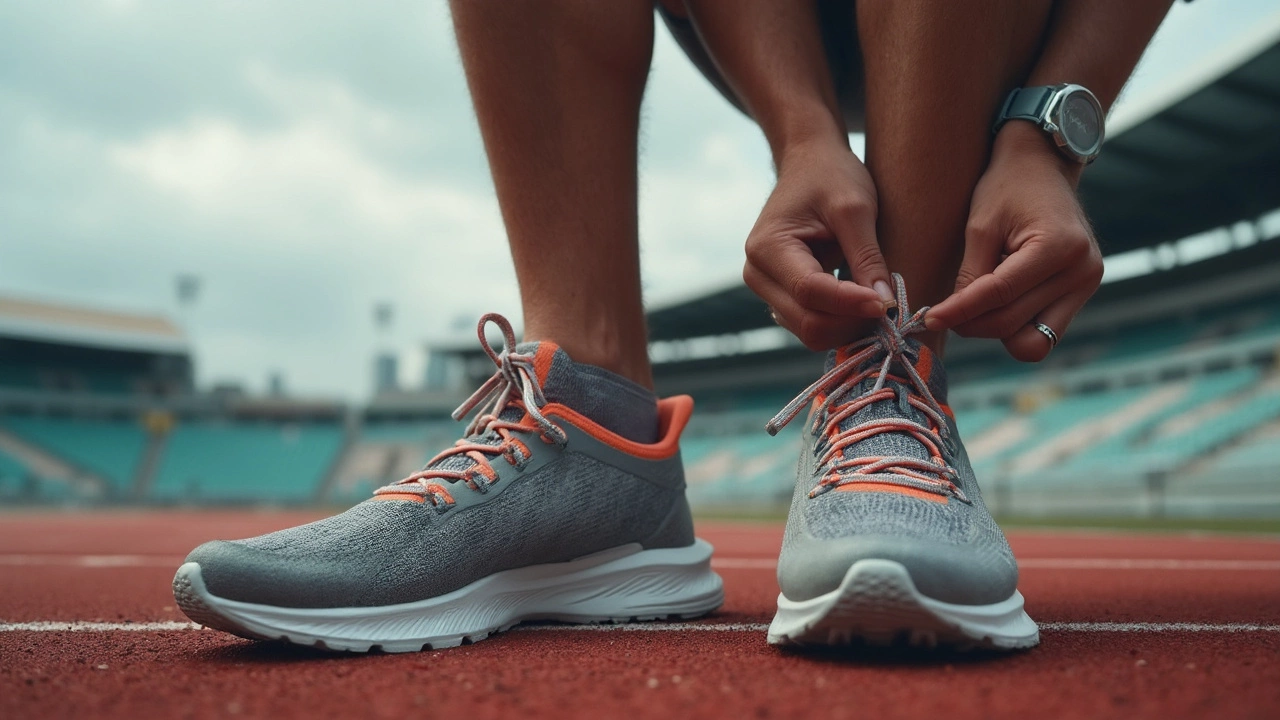
When Does a Shoe Become Essential for Your Sport?
There’s a big jump from just wearing any footwear to having the right shoe that actually counts as sports equipment. The key moment shoes become essential? When the activity demands grip, support, or protection that regular sneakers just can't offer.
If you play soccer, there’s no substitute for those cleats. Run in regular shoes on wet grass and you’ll spend most of your game slipping and sliding. Same with basketball—real basketball shoes protect your ankles with more padding and keep you grounded with better traction. Skateboarding? You need flat soles for board feel and tough sides so you don’t rip through them in a week.
- Tennis: The constant side-to-side motion basically screams for shoes with strong lateral support, or you risk rolling an ankle.
- Running: The cushion, shape, and weight matter if you’re pounding miles—good running shoes can help reduce impact injuries by up to 30% according to recent studies.
- Hiking: Standard sneakers won’t cut it on rocky trails. Hiking boots give you the tread and ankle support for uneven ground.
Some sports even write footwear into the rulebook. In track and field, specific spikes or shoes are required for each event. In pro cycling, you can’t even lock into the bike pedals with regular shoes; you need ones that clip in for efficiency.
| Sport | Injury Risk (No Sport Shoe) | Required in Official Play? |
|---|---|---|
| Soccer | High (ankle sprains, slips) | Yes |
| Basketball | Medium-High (ankle/knee injuries) | Yes |
| Running | Medium (foot and joint injuries) | No, but highly recommended |
| Tennis | Medium (ankle injuries) | No, but shoes with proper support expected |
The bottom line: once your sport asks a lot from your feet, or there’s a real risk of hurting yourself without the right protection, your shoe stops being just a shoe. It becomes your secret weapon for better play and fewer injuries.
Cool Facts: Shoe Tech and Pro Performance
If you think all athletic shoes are the same, you've missed out on some wild advances in sports equipment lately. Today's high-end sneakers aren’t just about flashy looks—they’re engineered like high-tech gadgets with the latest materials and design tricks. Let’s break down what makes the modern athletic shoe a game-changer.
- Some running shoes use carbon fiber plates in their soles. Why? To give you a literal spring in your step and help elite runners shave whole minutes off marathon times.
- Basketball shoes have recently gotten lighter, with mesh uppers that cut down on sweat and keep your feet cool. Superstars like Stephen Curry even work with brands to tweak grip patterns for their style of play.
- Soccer cleats now include features like texturized uppers that help players control the ball better. It’s not just about comfort; this tech can make or break a champion’s performance, especially in pro matches.
If you want hard numbers: in the 2019 New York City Marathon, over 30% of runners wore Nike's record-breaking "Vaporfly" model, credited with reducing marathon times by up to 4%. Here’s a quick at-a-glance look:
| Sport | Shoe Tech Example | Impact |
|---|---|---|
| Running | Carbon Fiber Plates | Faster finish times |
| Basketball | Grip-Optimized Outsoles | Better cuts and stops |
| Soccer | Texturized Ball-Grip Surface | Improved control |
What does it mean for you? Picking the right shoe goes way beyond matching your jersey. Tech-packed sneakers can boost your speed, protect you, and maybe even give you that small edge when you need it most. If the pros are picky about it, there’s a reason. Try some of these features yourself—it might surprise you how much difference it makes in your next game.
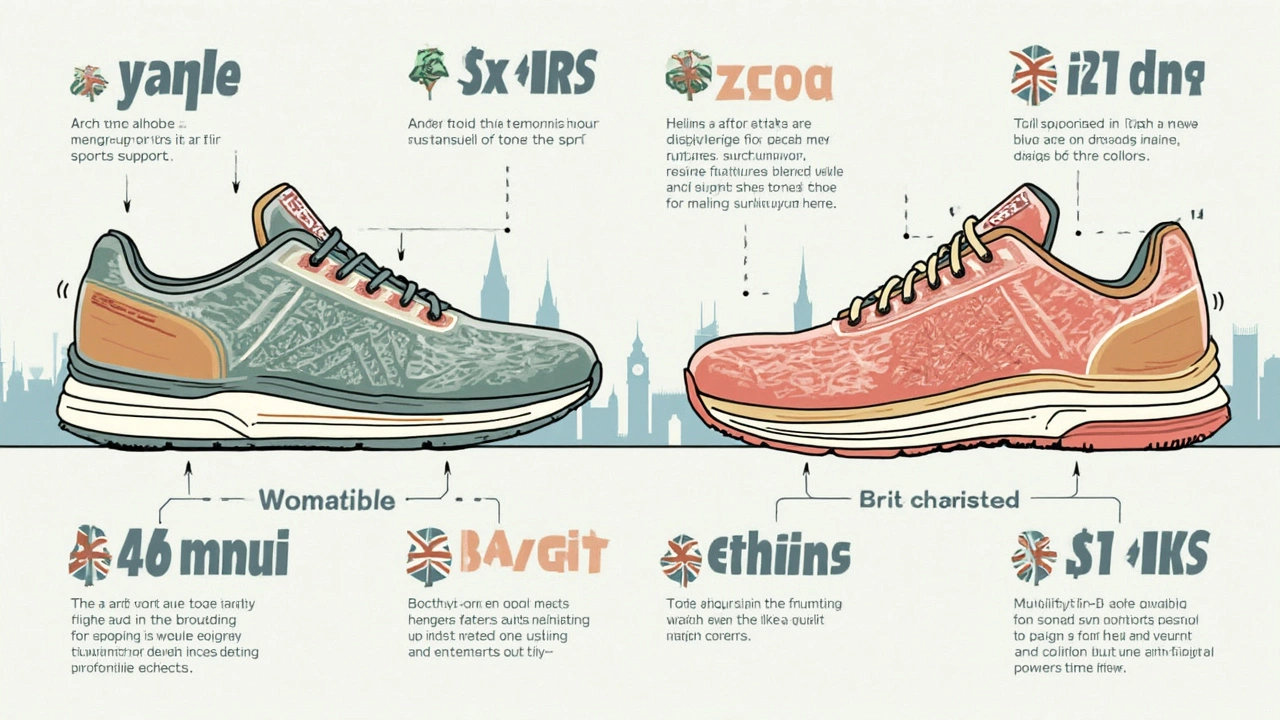
Quick Tips: Picking the Right Shoe for Your Game
If you’ve ever limped home after soccer or ended a run with blisters, you know the wrong shoe can ruin the experience. Picking the right pair isn’t just about brand or style—it’s about fit, purpose, and performance. Here’s what actually matters when you’re choosing shoes for any sport.
- Sports equipment is not just for pros—even casual athletes should pay attention to shoe type. For example, running shoes are built lighter with shock-absorbing foam, while basketball shoes have higher collars for ankle support.
- Focus on fit. Your foot should feel snug, but not squeezed. Many forget feet swell during activity, so shop for shoes in the afternoon, when your feet are at their biggest.
- Check the tread and sole. Soccer cleats have studs for grip, while tennis shoes have flat, patterned soles for quick stops. Wrong grip = slipping and sliding.
- Look for the right cushioning. If you jump a lot (like in volleyball or basketball), good padding keeps joints safer. Runners also need extra heel cushioning.
- Don’t get fooled by style over substance. Sure, neon looks cool, but the real difference is in support, flexibility, and breathability. Ask for expert help in stores that measure foot width and gait.
Care about data? A 2023 study from Runner’s World showed people wearing sport-specific shoes cut injury risk by almost 40% compared to those in basic sneakers. That’s a huge payoff just for picking gear that matches your activity.
| Sport | Main Shoe Feature |
|---|---|
| Basketball | Ankle support, grip |
| Running | Lightweight, cushion |
| Soccer | Studded outsole |
| Tennis | Flexible sole, side support |
Give shoes a true test at home on clean floors before hitting the field. If anything feels off—pinching, slipping, not enough arch support—exchange them. Plenty of stores give you that window because they know the right shoe is game-changing.


